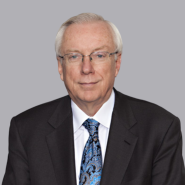Cleveland Clinic II
- September 21, 2017
- Article
Associated People
In Cleveland Clinic II, (Cleveland II) Judge Brinkema decided that Cleveland Clinic’s (Cleveland) USPs 9575,065 (’065) and 9,581,597 (‘597), both continuations of USP 7,223,552 (‘552) previously been found in Cleveland I to be directed to patent ineligible subject matter, were also directed to patent ineligible subject matter. ED VA, August 4, 2017, 1:17-cv-198.
In asserting patent eligibility, in Cleveland argued the USPTO guidance was entitled to Skidmore deference which was dismissed in a footnote. Judge Brinkema noted that none of the hallmarks existed in the USPTO adoption of the guidance that were found in Skidmore. Judge Brinkema looked to see if the guidelines were adopted through a process which warrants such deference such as formal adjudication or notice and rule making which they were not. But more importantly, Congress has not given the USPTO with respect patentability determinations any substantive rule making authority. One need only read the comments on the guidelines to realize that even amongst the IP community many of the guidelines have met with skepticism. Litigants should use with great care the guidelines, if at all, given the controversy surrounding them. Cleveland II is a warning that simply persuading the USPTO that claims are patent eligible is not sufficient to obtaining claims that are immune to a patent eligibility challenge.
Cleveland, like many patentees facing a patent eligibility challenge, ran away from the Supreme Court’s Mayo and Alice decisions instead of embracing them and explaining why the claims were consistent with and furthered the policy discussed in the decisions. There is also a tendency to get too involved in the technology and not enough in explaining the claims in a simple straightforward manner.
Cleveland’s patents relied upon the level of myeloperoxidase (MPO) to determine a person’s risk for cardiovascular disease (CVD). The relationship between MPO level and CVD was known but the only known method for determining the MPO level involved detecting the MPO level in atherosclerotic plaque or lesion, an invasive procedure not practical for ordinary screening use. Cleveland developed a non-invasive blood test which achieved the same result and which could be widely applied by doctors to screen patients for the risk of a CVD event. This allowed doctors for the first time to screen patients at risk for a CVD event in the six months following the test the from those who were not. Armed with this information, the doctor could then prescribe a treatment regimen to reduce the risk and follow the progress of the treatment.
These facts alone distinguish Cleveland from Mayo. In Mayo it was well understood that the level of certain metabolites in the blood were correlated with the likelihood that a particular dosage of a thiopurine drug would be ineffective or cause harm. What was not known with precision was the minimum or maximum metabolite levels that defined the effective and safe dose. Prior to the invention doctors had been detecting the metabolite level in the patient’s blood to determine whether the dose of thiopurine was correct or not. All that the patentee in Mayo did was define with more precision the desired metabolite level in the blood using the same detection method doctors had been routinely using. In Cleveland, the doctors had not detected MPO levels in a patient’s blood to check for CVD prior to Cleveland’s invention. Thus, this step was novel. In Mayo the Supreme Court specifically noted:
We need not, and do not, now decide whether were the steps at issue here less conventional, these features of the claims would prove sufficient to invalidate them. S.Ct. 1289, 1302 (2012).
Here detecting the blood level of MPO was new, the opposite of conventional. Yet both Judge Brinkema and the Federal Circuit decided the steps were old. What was old, was the application of known techniques to detect the MPO level. However, no one did this detection until Cleveland taught the detection of the MPO level in the blood. The courts focused on the technology used to make the detection and not on whether detecting itself was an invention. The same mistake made in Sequenom. While the Supreme Court denied certiorari in Sequenom, that does not equate to an agreement or acquiescence in the decision as can be seen the recent Heartland decision overturning the VE Holding Corp., where certiorari was denied in 1991, 111 S. Ct., 1351.
In sum, Cleveland I and II are a step backward in the development of a coherent patent eligibility body of law.










 Counseling & Strategic Advice
Counseling & Strategic Advice IP Transactions
IP Transactions Litigation
Litigation PTAB Proceedings
PTAB Proceedings Technology Transfer
Technology Transfer Trademark & Designs
Trademark & Designs U.S. Patent Procurement (Application Drafting & Prosecution)
U.S. Patent Procurement (Application Drafting & Prosecution)








